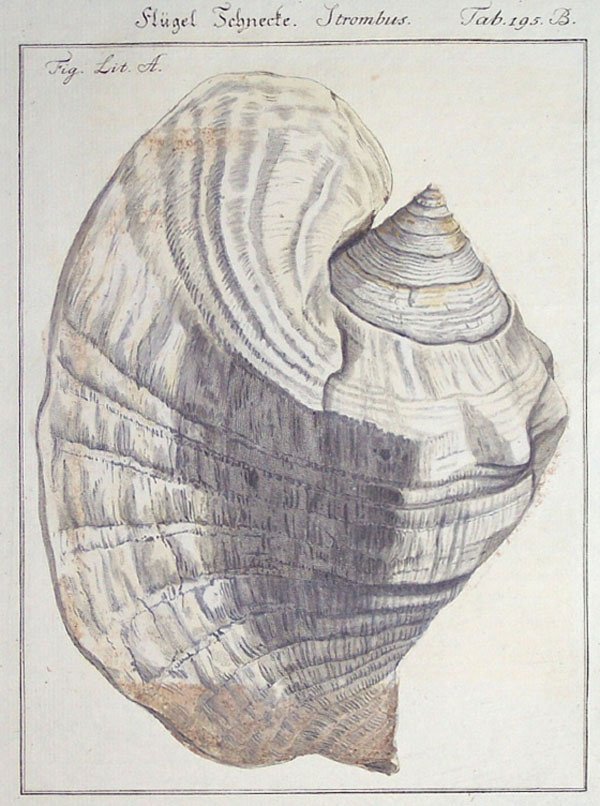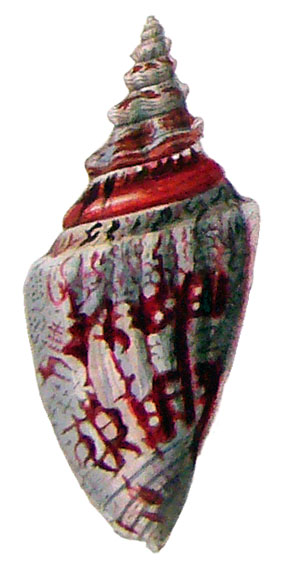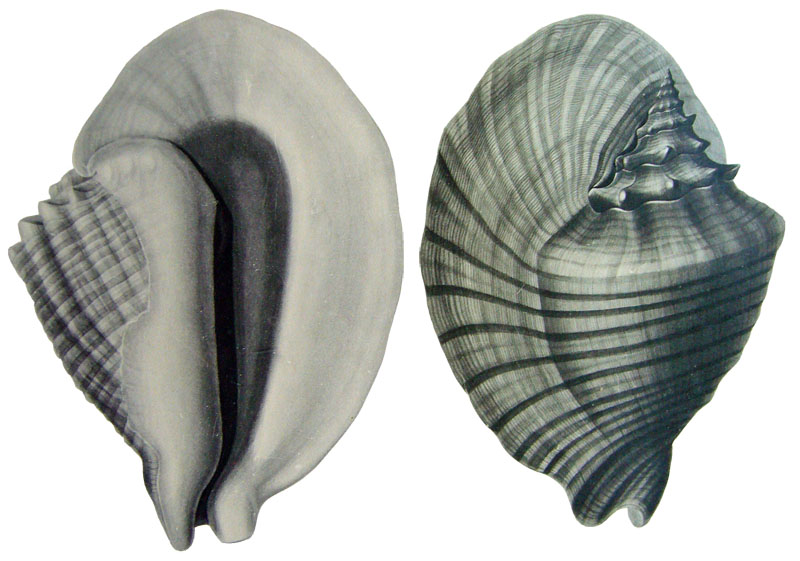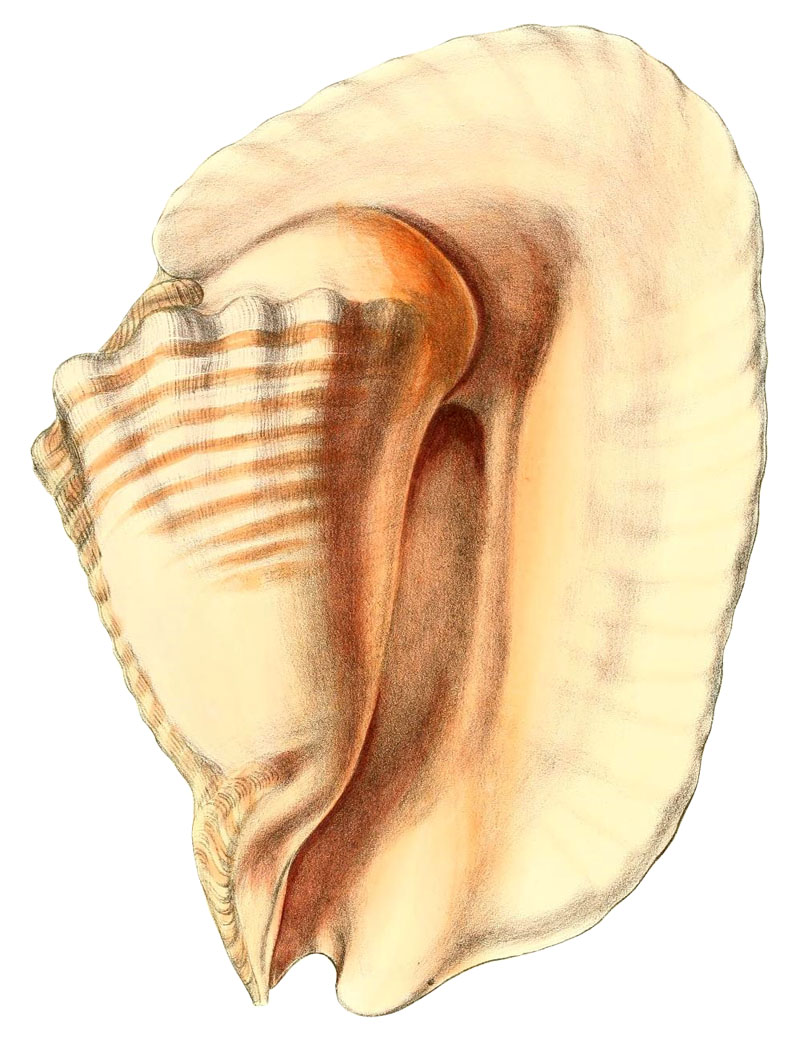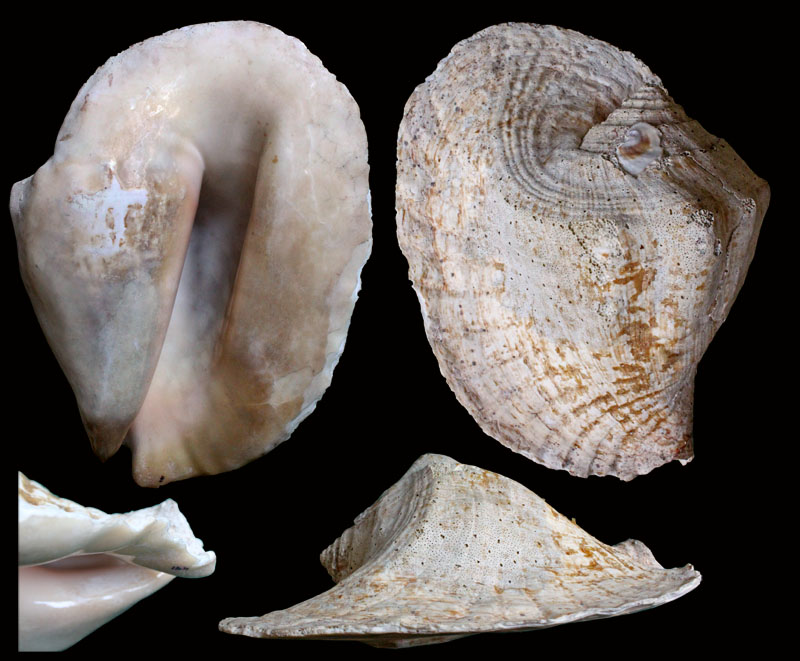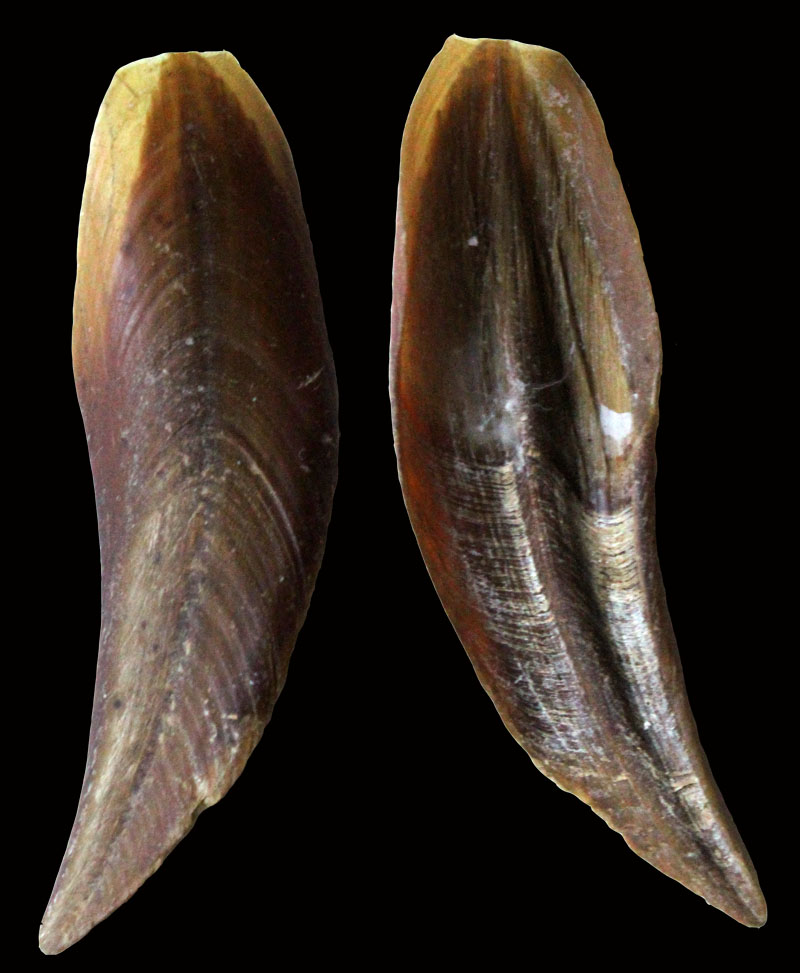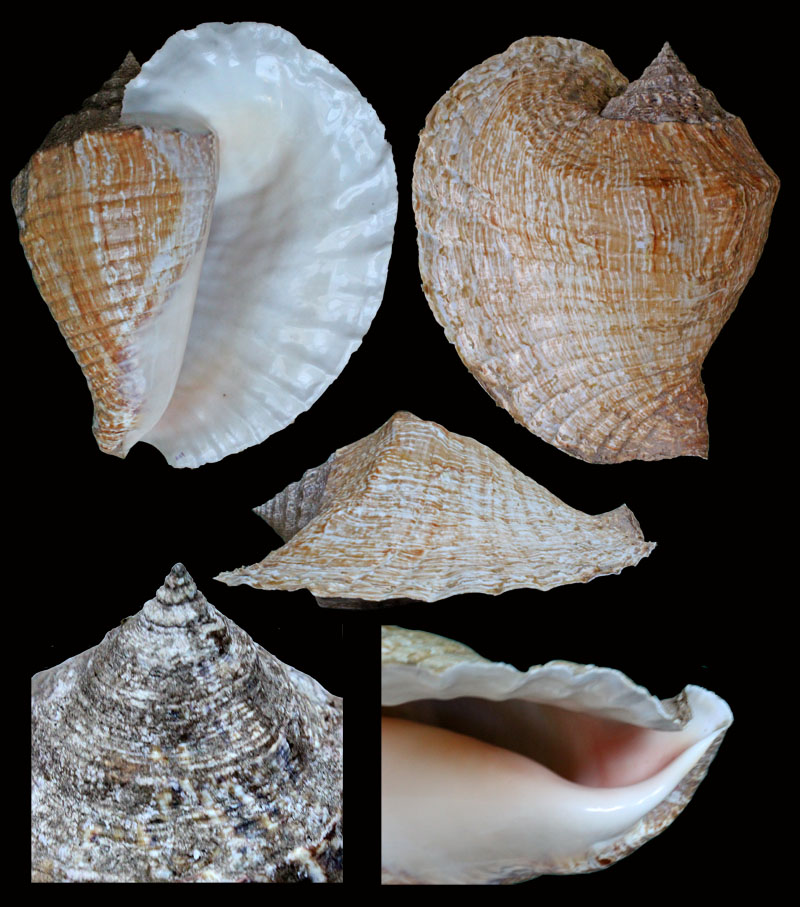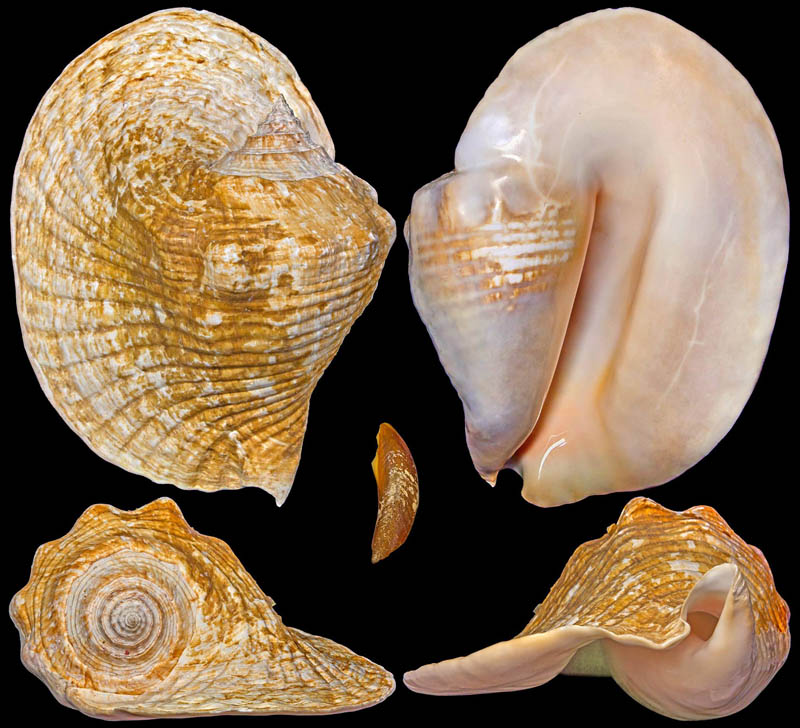Stromboidea
Original Designation of Strombus goliath by Schröter, 1805, p. 138/139:
- "S. 456. wird nach Num. 14. eingeschaltet: Lister Hist. Conchyl. tab. 862. fig. 18. a. Chemnitz Conchyl. Th. XI. tab. 195. B. fig. A. der Goliath Strombus goliath."
Locus typicus: Paracuru Beach, 100 km north of Fortalezza (Ceará), Brazil (Matthews, 1980)
History and Synonymy
Lobatus goliath (Schröter, 1805: 138-139) (Strombus)
(Lobatus goliath) by Chemnitz & Martini, 1769-1795
1844
Strombus goliath juvenile in Duclos, 1844, pl. 28, fig. 4
Strombus goliath in Duclos, 1844, pl. 30, fig. 1, 2
1850
Strombus goliath in Reeve, 1850, Strombus, pl. 1, fig. 1
Specimens from private collections
Lobatus goliath (Schröter, 1805); Fortaleza, Ceara State, Brazil; 325 mm; Coll. Gijs Kronenberg no. 441
Lobatus goliath (Schröter, 1805); operculum; Fortaleza, Ceara State, Brazil; 325 mm; Coll. Gijs Kronenberg no. 441
Lobatus goliath (Schröter, 1805); Brazil; Coll. Gijs Kronenberg no. 637
Lobatus goliath (Schröter, 1805); Natal, Rio Grande do Norte, Brazil; Dived; 305.0 mm; Coll. Chong Chen
Comment Chong Chen:
- "With an average shell length of 300mm and a staggering record size of 380mm, the aptly named "Goliath Conch" is the largest strombid species alive today. A herbivorous gastropod living in shallow water down to about -50m deep, it is found mostly on sandy bottoms and primarily feeds on algae and seagrass. Although generally considered to be endemic to Brazil, recent findings reported the presence of two small populations in Barbados as well, presumably recently settled through a rare dispersal event. Its handsome shell is distinctively adorned with a very extensively flared outer lip and thin layer of golden brown periostracum. During recent years it has been moved around a few genera as part of the extensive revision of the family Strombidae, including Strombus, Eustrombus, Titanostrombus, before finally settling in Lobatus, its current genus. Though a locally common species in Brazil, it is not easy to acquire a large and operculated specimen with a perfect, unfiled lip."
References
- Lamy, D. & Pointier, J.-P., 2018. Marine and Freshwater Molluscs of the French Caribbean Vol. I-II; PLB Éditions, Gosier, Guadeloupe, 785 pp., 253 pls.
- Matthews, H.R. 1980. Moluscos brasileiros da familia Strombidae (Gastropoda, Prosobranchia; Mossoro: Escola Superior de Agricultura de Mossoró; Colecao Mossoroense CXXIX, pp. 141.
- Schröter, J. S. 1805. Berichtigungen für meine Einleitung in die Conchylienkenntniss nach Linné. Zweyte Fortsetzung: Archiv für Zoologie und Zootomie 4(2) 137-160. Link

